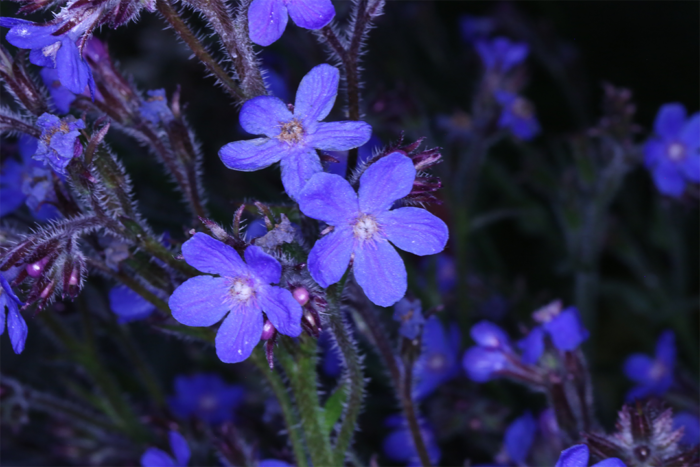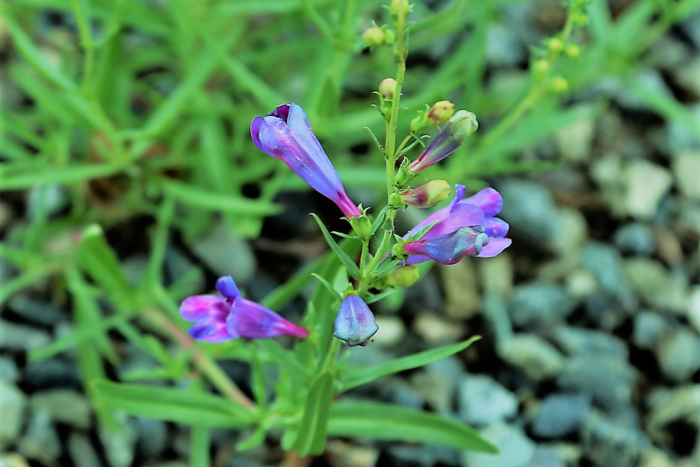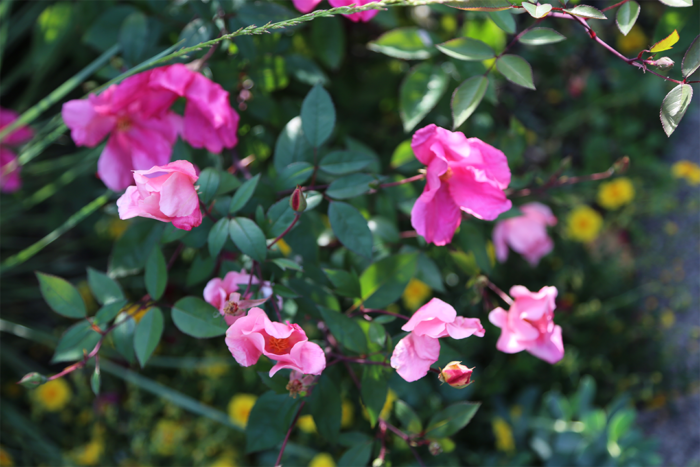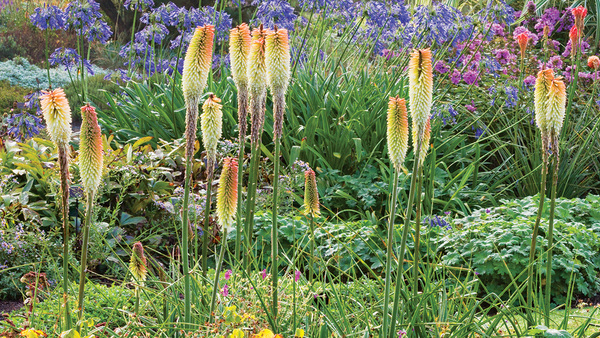
Late May into early June is a wonderful time in a Northwest garden. The coolness of the early spring days has given way to warmer daytime temperatures. The afternoons are filled with warm and sometimes hot sunny weather. Get out your wide-brimmed hat to help you keep cool while you’re working in the garden, because our afternoons can already be HOT. With this change, there is a whole new group of flowers that are getting ready to bloom and exciting the gardener in all of us. Here are a few perennials that are starting to look great at this time of the year and will continue to look great into summer.

‘Margarita BOP’ foothill penstemon
‘Margarita BOP’ foothill penstemon (Penstemon ‘Margarita BOP’, Zones 6–10) is a beautiful long-blooming perennial for sunny, dry sites. This long-season bloomer has dark blue to intense purple-red flowers that contrast nicely with its green-gray foliage. It will provide food and habitat to insects and birds all season long and is a great addition to a highly designed garden, native landscape, or summer-dry garden. ‘Margarita BOP’ blooms from spring all the way through fall, and with consistent deadheading it looks great all season long. As with all foothill penstemon, do not tidy up this perennial until new growth is present in spring. Penstemon resent hard fall cleanup and will perish without their previous season’s stems and leaves to protect them in the winter. ‘Margarita BOP’ is an excellent choice for the Northwest due to its wintery cold-hardiness and long bloom time. It can grow 2 feet tall and 2 feet wide with some light summer water.

Butterfly rose
Butterfly rose (Rosa ‘Mutabilis’, Zones 6–9) is an excellent long-blooming rose that is great for low-water gardens. It is commonly called the “butterfly rose” because the shrubs look like it is covered in masses of butterflies. The dark, dusty, purple-red stems and leaves provide a beautiful foil to the blooms. The flowers can be a kaleidoscope of colors. These single roses start off yellow, then change to orange, then pink, finally changing to a dark pink-red before dropping. This rose is also excellent at attracting pollinators and all types of beneficial insects. It responds well to hard pruning to contain size, as it will become a very large shrub otherwise and take over more space than most of us are willing to give it. Butterfly roses grow well in average soil conditions and can handle drier conditions once established. Their typical size is 3 feet by 3 feet with pruning and 6 feet by 6 feet or even larger without pruning.

‘Alkanet’ Italian bugloss
‘Alkanet’ Italian bugloss (Anchusa azurea ‘Alkanet’, Zones 3–8) is a newcomer to the Northwest garden scene, although it’s not new to other parts of the United States. It has been in cultivation since the early 1900s. This tough and fuzzy plant shares some characteristics of the other well-known plants in Boraginaceae: coarse, hairy, and thick leaves that help retain moisture; pollinator-attracting royal blue flowers; and a reputation for being tough, long-lived, and well-rooted. Italian bugloss can be cut down to the ground once it has bloomed and will bloom again later in the summer. Its tough leaves are resistant to the appetites of deer and snails (rabbits have also been staying away from mine). Some gardeners think the leaves are prickly, so wear gloves to be on the safe side. Italian bugloss does best in average to dry soils that are well drained, and it will not tolerate soggy, wet conditions. It will grow 2 to 4 feet tall and 2 feet wide.
I hope that you are inspired to try one, two, or all three of these reliably long-blooming summer plants in your own Northwest garden. Happy gardening!
Jason Jorgensen is a landscape designer in Seattle, Washington.


















Comments
Log in or create an account to post a comment.
Sign up Log in